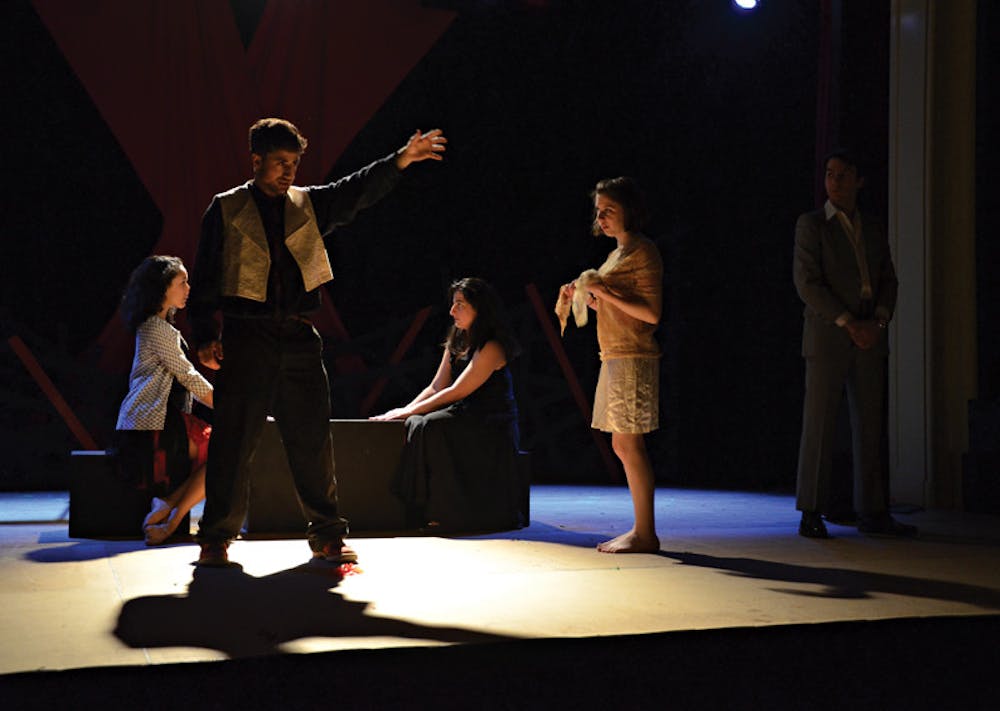When elements with no visible connection somehow combine, they can create beautiful and unexpected synergy. This is the case for “María de Buenos Aires,” a whimsical tango-filled production that defies traditional conceptions of opera. Brown Opera Productions will stage the opera’s North American premiere.
Set in 1920s Buenos Aires, the storyline follows Maria, a tragic heroine who takes over the underworld after being killed for her promiscuity, and Dundue, Maria’s lover who travels through time searching for her. They each encounter various characters and face significant plights, eventually finding redemption.
The surreal plots exemplify the opera’s departure from more orthodox works. The storyline borrows ideas from various ideological origins and welds them together. Underworld, shadows, heaven, time-travelling combine to form an eclectic and eccentric series of themes and ideas.
Though producing such an unconventional work initially appeared daunting to the BOP board, it was convinced by the brilliance of the music.
“The plot is pretty crazy. We were a little unsure of it, but then we listen to the music and then we all fell in love with it,” said Eleanor Siden ’15, the show’s conductor.
Acquiring the original scores was not an easy task. The director, Alejando Garcia Morales ’15, said he had to contact a company in France called Atelier Lyrique de Tourcoing for the musical materials, which were “never edited or published and so are in a semi-manuscript, cut-and-pasted, multilingual state.” Though the state of the materials posed a challenge for the team, it allowed for flexibility in their interpretation.
“This has ultimately proved to be a blessing in disguise, as it gave the directors and performers free rein in interpreting this difficult, complex work,” wrote Garcia Morales in a programming statement.
The score, originally written by Astor Piazzolla, is beautifully written. Student players make up a small tango orchestra, reviving the lost glamour from the manuscript. The marriage of classical musical forms and uninhibited tango melodies forms an exhilarating and infectious score, sending constant shivers down the spine.
The music, with its haunting and ethereal melodies, also fits perfectly with the twists and turns of the plot. The escalation and ebbing of emotions are captured precisely by crescendos and dimming of the music. Almost every chapter is led by different instruments, and variations in sound textures create more layers for the plot. Siden and the orchestra members maintain great quality and high precision throughout the entire production.
Above the stage, a libretto of the opera in English is displayed while the cast sings in the original Spanish. Morales translated Horacio Ferrer’s original version into English.
The cast delivered strong performances, managing the complex score and libretto without being overshadowed. Singing in the original Spanish libretto, they showcased ample vocal ability and emotional complexity.
Maria, played by Mariami Bekauri GS was a delight. Tito, played by Jacob Mukand ’18, boasts a deep and smooth timbre that draws in the audience. Cast members also tackled physical theatricality with the audacity of professional stunt performers. Gorrion, played by Jonathan Abrams ’15, and Gato, played by Jacob Laden-Guindon ’18, stage a vivid fight and tango slapstick, adding an element of humor to the production.
Though the set is simple, light designer Ryan Lessing ’17 renders the lighting to function as numerous sets of lenses. At times, beams of red light accentuate the red flags hanging in the background, creating shades of the underworld. Other times the background settings are entirely obliterated by strong outward glares, conveying a brooding ambiance.
The production of “María de Buenos Aires” is highly ambitious; Vocal Director Sami Overby ’17 said the directors and the cast rehearsed almost five days per week for the production. This hard work shows in the quality and the diversity of the show.
“I think it’s a natural thing to love this huge sound, this melodrama, this interdisciplinary art of dance, music, drama and scenography,” Siden said.
Tapping into unpublished works can be extremely rewarding and challenging, so BOP deserves kudos for shedding light on this hidden gem.





